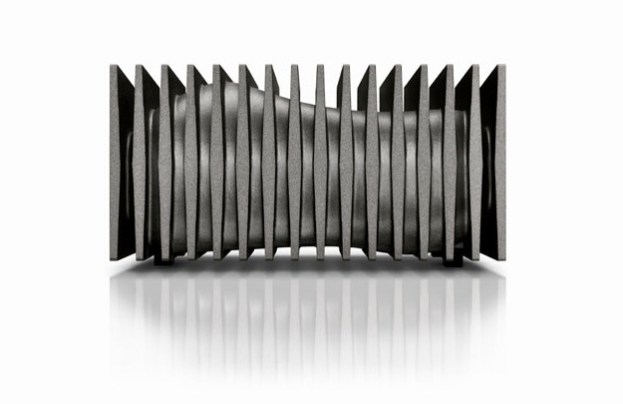
After their first collaboration yielded the “Toaster” hard drive, LaCie and Philippe Starck have paired up again for the new Blade Runner hard drive.
The quirky new external drive takes on an organic, glob-like shape intersected with row after row of fins. It’s not just for looks. The protective blades, which are made of aluminum, also act as the radiator to keep the hard drive cool by creating space for air to circulate around the hardware. In another twist, the LED power button takes the shape of Starck’s plus-sign logo.
As for the functional part of the equation, the Blade Runner features a high-speed USB 3.0 interface with cross-platform compatibility, and comes in 4TB capacity (every model also comes with 10GB of complementary Wuala Secure Cloud Storage). This is one drive you won’t want to travel with: It measures a bulky 5.6 inches by 7.6 inches by 2.9 inches, and weighs in at 4.4 pounds.
Each of the Blade Runner units are custom built, and only 9,999 of the hard drives were produced, making it a limited-edition item. It currently retails for $299 at the LaCie Online Store and select specialty stores, and comes with a two-year limited warranty.
Philippe Starck has lent his name to many beautiful and high-tech products. From the dream yacht commissioned by Steve Jobs to the clever Modular Tower kitchen system, he has become a sought-after partner for many tech companies. His philosophy is to give a purpose to the style, symbols, and functions of any piece he designs.


